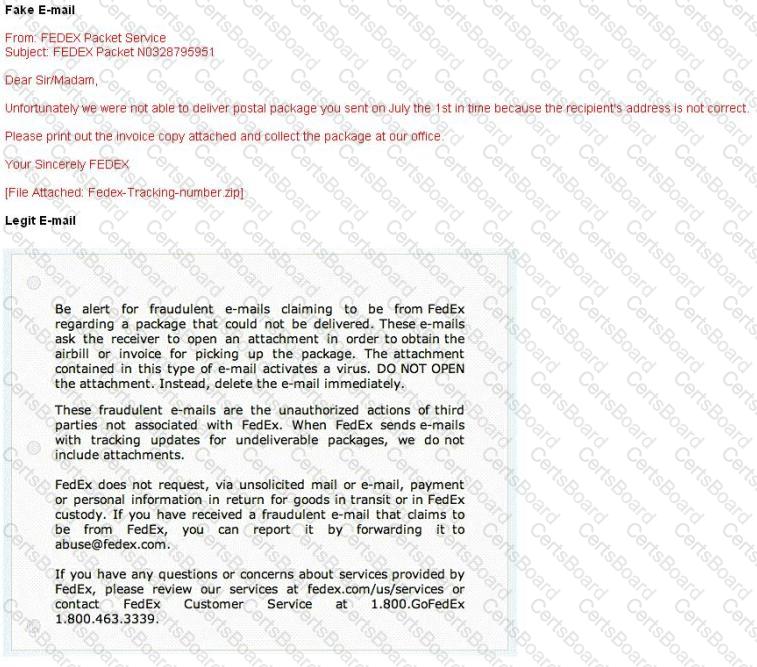Google uses a unique cookie for each browser used by an individual user on a computer. This cookie contains information that allows Google to identify records about that user on its database. This cookie is submitted every time a user launches a Google search, visits a site using AdSense etc. The information stored in Google's database, identified by the cookie, includes
How would you prevent Google from storing your search keywords?
Annie has just succeeded in stealing a secure cookie via a XSS attack. She is able to replay the cookie even while the session is invalid on the server. Why do you think this is possible?
A common technique for luring e-mail users into opening virus-launching attachments is to send messages that would appear to be relevant or important to many of their potential recipients. One way of accomplishing this feat is to make the virus-carrying messages appear to come from some type of business entity retailing sites, UPS, FEDEX, CITIBANK or a major provider of a common service.
Here is a fraudulent e-mail claiming to be from FedEx regarding a package that could not be delivered. This mail asks the receiver to open an attachment in order to obtain the FEDEX tracking number for picking up the package. The attachment contained in this type of e-mail activates a virus.

Vendors send e-mails like this to their customers advising them not to open any files attached with the mail, as they do not include attachments.
Fraudulent e-mail and legit e-mail that arrives in your inbox contain the fedex.com as the sender of the mail.
How do you ensure if the e-mail is authentic and sent from fedex.com?
David is a security administrator working in Boston. David has been asked by the office's manager to block all POP3 traffic at the firewall because he believes employees are spending too much time reading personal email. How can David block POP3 at the firewall?


